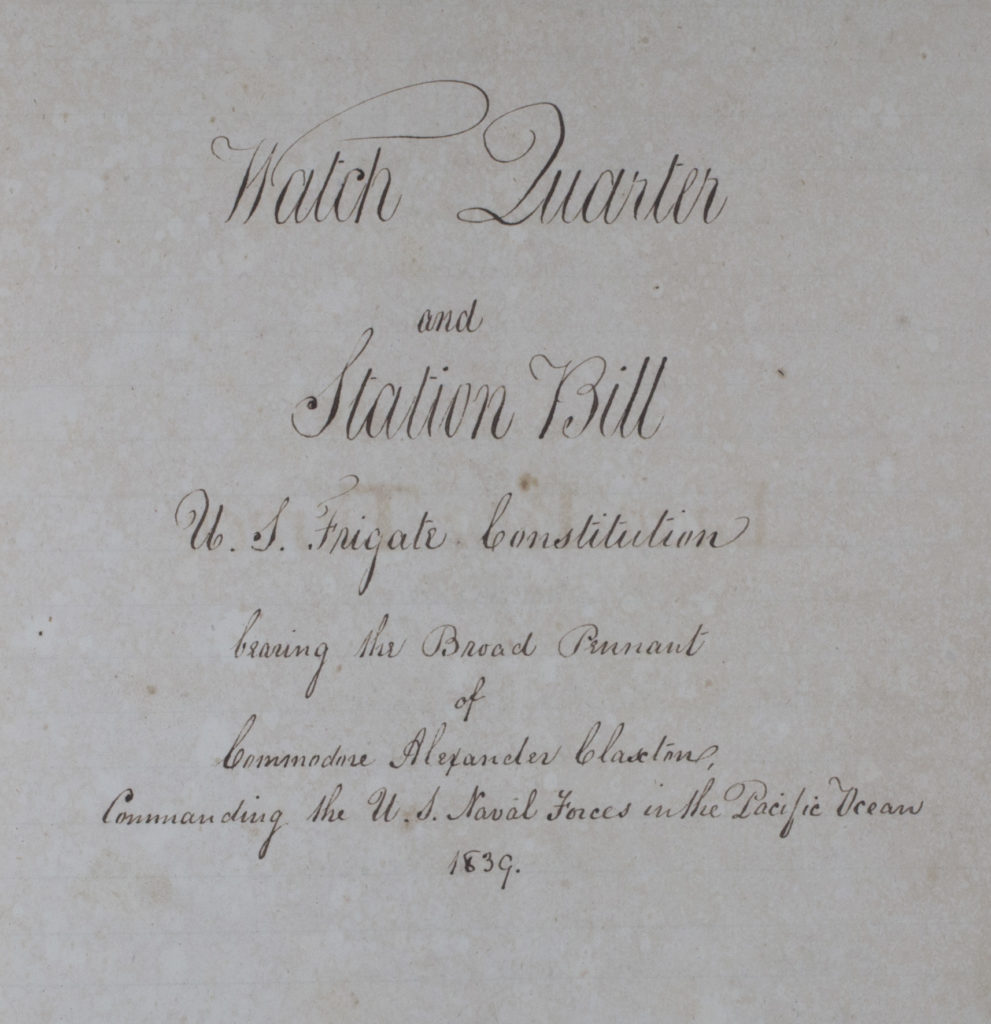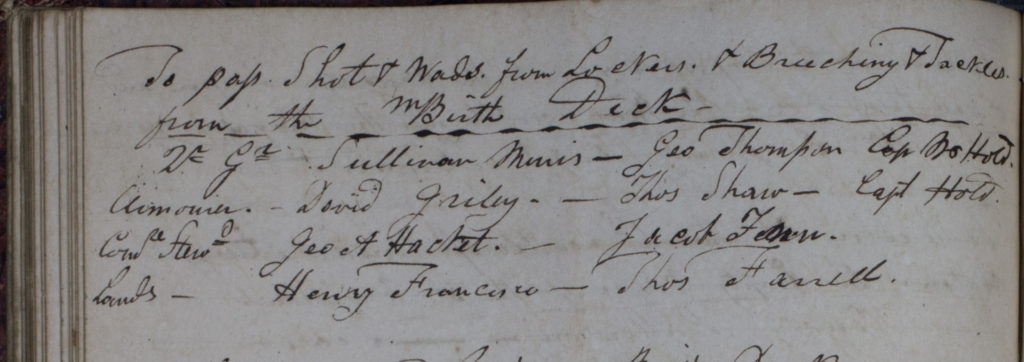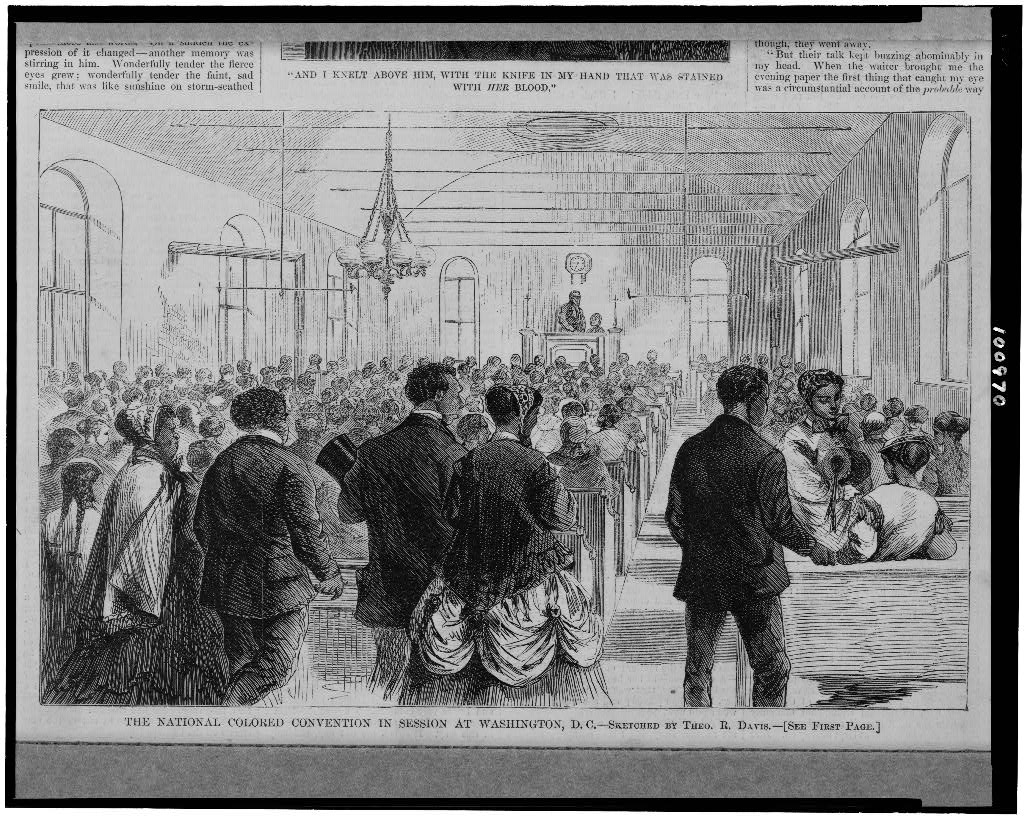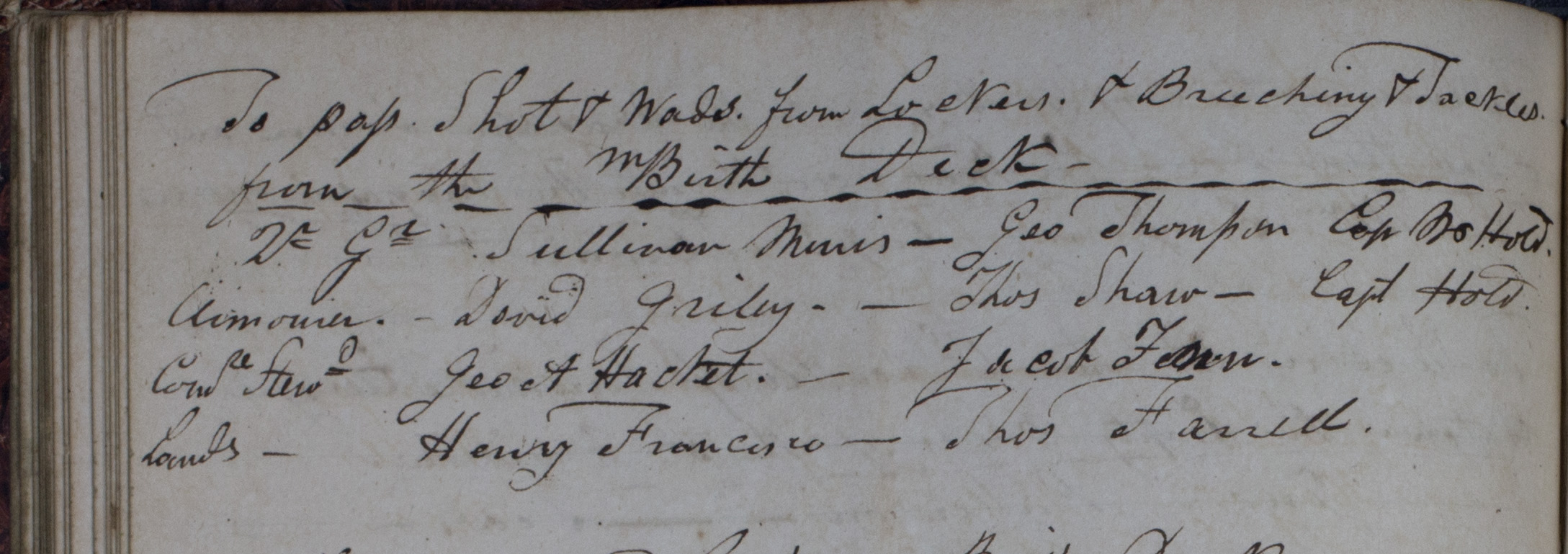The USS Constitution Museum maintains a database of more than 15,000 crew members who served on USS Constitution over the ship’s entire history. We’ve learned a lot about many of those sailors, particularly focusing efforts on the roughly 1,200 crew members who served during the War of 1812 (which can be searched online here), but most are little more than a name accompanied by a set of service dates and rank and rate. Often, it is only after a researcher or descendant brings a specific sailor to our attention that we uncover new stories about Constitution’s crew and their individual contributions to American history.
George Hackett (b. 1806 – d. 1870) is one of Constitution’s hidden heroes, whose contributions have been brought to light by Martha S. Jones, an historian, writer, and professor at Johns Hopkins University.
In the decades prior to the American Civil War, Hackett was a Black Baltimorean and activist pursuing rights of citizenship for free African Americans in Maryland. His story is one of the central threads of Jones’ book, Birthright Citizens: A History of Race and Rights in Antebellum America. Working as a coal agent, and later the founder of a railway and shipyard, Hackett was a business owner who encountered the legal and commercial constraints on emancipated working class Blacks in 19th-century America – constraints he fought hard to overcome them. Hackett petitioned the Maryland legislature to block proposals that would have led to the removal or re-enslavement of free Black people in Maryland. And he successfully defended himself in court against White men at a time when the legal rights of free Black men were highly uncertain. As a leader of the Bethel AME Church in Baltimore, which his father had also led, Hackett helped others in Baltimore’s Black community establish and exercise their rights in the face of systematic oppression.
Before all that, however, Hackett served as a member of USS Constitution‘s crew. Joining the U.S. Navy in 1839 at the age of 33, Hackett was assigned as steward to Commodore Alexander Claxton, who was also a native of Baltimore. Constitution, having spent the last several months in ordinary in Norfolk, Virginia, set sail for the Pacific coast of South America as the Pacific Squadron flagship. Claxton, the senior officer, was responsible for leading the entire squadron, which consisted of two to four smaller ships in addition to Constitution. The management of Constitution itself resided with the ship’s captain, Daniel Turner, who worked closely with Claxton. According to Jones, Hackett’s later success in asserting his own rights and that of other free Black Americans can be attributed in part to the lessons he learned while on board Constitution and at the ship’s port stops in Central and South America during an era of emancipation.


Hackett’s shipboard duty as steward to the commodore placed him in the great cabin, where other sailors were rarely, if ever, allowed to venture. Hackett was present as Claxton hosted diplomatic officials and secured American international agreements. He was also present as Claxton participated in naval justice, seeing firsthand how sailors were able to defend and exert their rights in courts martial. When Claxton died of dysentery in March 1841, Hackett’s time on Constitution was cut short. He was sent back to the United States aboard a whaling ship bound for Nantucket.
As a Black sailor, Hackett had the same legal rights as his White shipmates on board, though he did not always have the same opportunities and was still subject to his shipmates’ racism. By observing Claxton and Turner, however, Hackett learned the workings of the naval justice system and understood that even the lowest-ranking sailor could appeal to that system. According to Jones, it was a lesson Hackett took home with him to Baltimore after his naval service ended. Hackett understood that knowing the system and one’s rights within it was a key component of legal success.
Back in Baltimore in 1844, Hackett was assaulted by a White man named John Pitts. Consequently, Hackett accused Pitts of assault and won his case in court. At the time, it was unusual for a Black man to be the complainant in such a court case, and even more unusual for him to win. But Hackett did so by leveraging the support of the sheriff, a court clerk, and the state’s attorney in explicitly meeting the requirements of the court. It forced a jury to find in his favor when they could have easily been disposed to a racial verdict. Emboldened by his victory, Hackett went on to support other African Americans in leveraging the courts to assert their rights.
While visiting foreign ports as a member of Constitution‘s crew, Hackett also observed the different ways in which other countries and European colonies were treating the emancipation of enslaved Africans. Although Black sailors were provided seaman’s protection certificates that served as proof of their American citizenship, their race often prevented them from stepping ashore during port visits for fear of imprisonment. Slavery had been abolished in the British colonies of the Caribbean, but free Black sailors were still not allowed ashore in Cuba. In Brazil, Chile, and Peru, governments were grappling with the integration or forced emigration of Black people who had been emancipated from slavery. Upon returning to Maryland, Hackett faced similar proposals to either limit the rights of African Americans or encourage them to leave the country altogether – efforts that only increased in the wake of the U.S. Supreme Court’s Dred Scott v. Sandford decision in 1857.
In 1860, Hackett petitioned the Maryland state legislature opposing a proposal by delegate Curtis Jacobs that Maryland could and should re-enslave its Black population. The proposal was defeated; though, by one account, Jacobs physically attacked Hackett on the state house lawn before the issue was even taken up.

* * *
This article has been made possible by a Sustaining the Humanities through the American Rescue Plan (#SHARP) grant from the National Endowment for the Humanities: Democracy demands wisdom. Any views, findings, conclusions, or recommendations expressed in this article do not necessarily represent those of the National Endowment for the Humanities.
The Author(s)
Carl Herzog
Public Historian, USS Constitution Museum
Carl Herzog is the Public Historian at the USS Constitution Museum.
